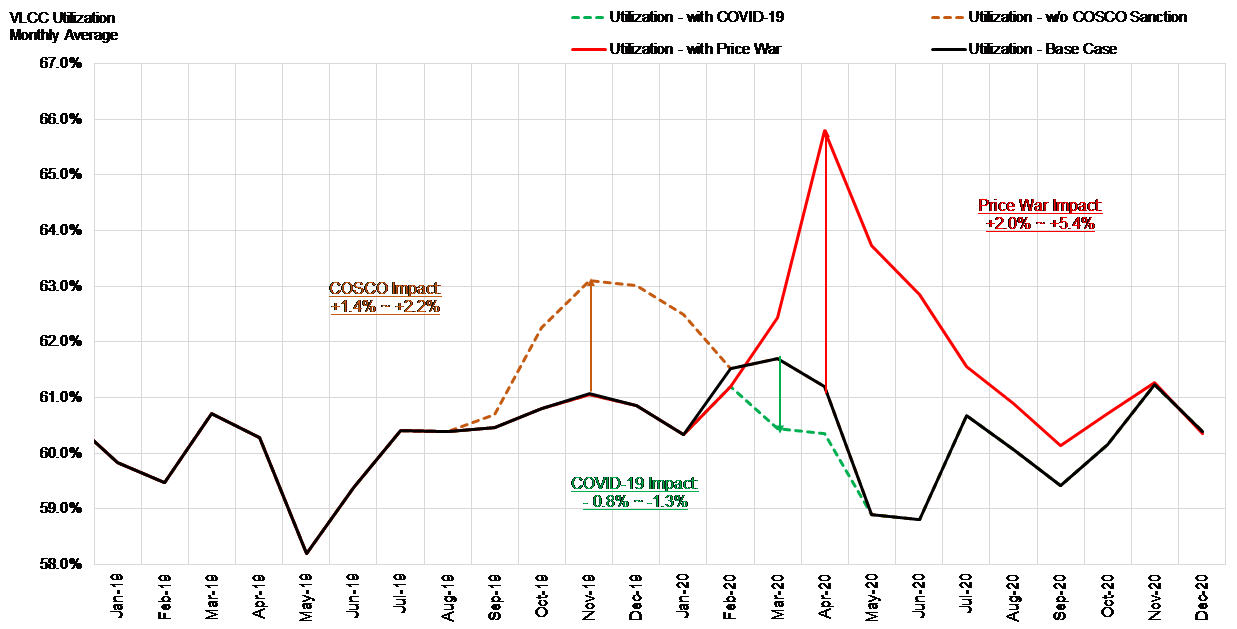VLCCs Rejoice in Oil Market Chaos
March 13, 2020
In the beginning of March, OPEC and the countries it is collaborating with (known as OPEC+) met in Vienna to discuss crude oil production going forward. After what was reported as marathon talks, the outcome of the meeting was entirely unexpected. Russia, the largest member and producer of OPEC+ allied countries and Saudi Arabia, the de facto leader of OPEC failed to reach an agreement on the actions of the organization going forward. The disagreements became so pronounced that in an entirely surprising move, Saudi Arabia essentially dissolved OPEC+ and announced that after the current production cuts expire at the end of March, they will begin increasing crude oil production to their optimal levels that will surpass 12 million b/d. They signaled their commitment to this by immediately slashing the Official Selling Price (OSP) of almost all of their crude grades and destinations.
The markets have already felt the impact with oil prices collapsing to low to mid US $30’s levels, similar to the ones seen in 2016. However, we do already see that the combination of events has created ideal conditions for tanker freight rates to rise sharply. In a normalized environment, this would not be the case given the weaker global demand -especially amid the coronavirus outbreak. However, at this point, the expectation is that the increased supply of 2.3 million b/d will find its way onto tankers and shipped to global refining centers, albeit placed in commercial and/or strategic storage tanks.
By using bilateral country trade data and applying our methodology, we estimate that VLCC liftings from Saudi Arabia will increase by 20 in March before potentially peaking at 55 in April over our original base case pre-price war. Putting together our anticipated increase in VLCC demand and applying the result to our VLCC utilization rates, we note the impact on demand will increase our utilization measurement by 2.0% to 5.4% above our base-case (no price war). By comparison, the COSCO impact peaked at 2.2% increase in utilization. As such, we anticipate that VLCC earnings will exceed those observed in Q4 2019 over the next three months, with peak levels likely in April(Figure1).
Figure 1 – VLCC Utilization (Base Case, Sensitivity) - January 2019 – December 2020F

Source: McQuilling Services









